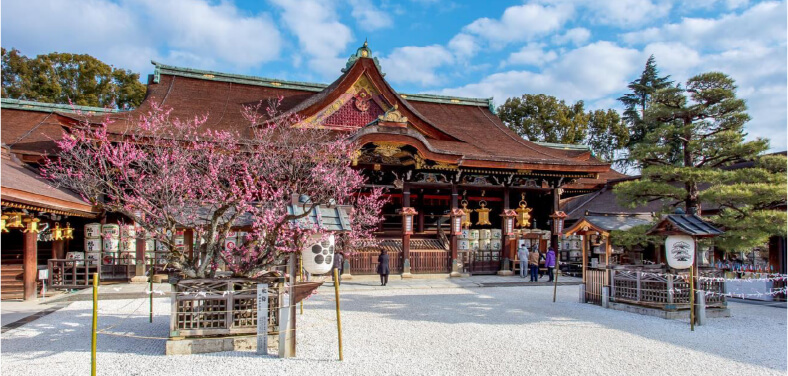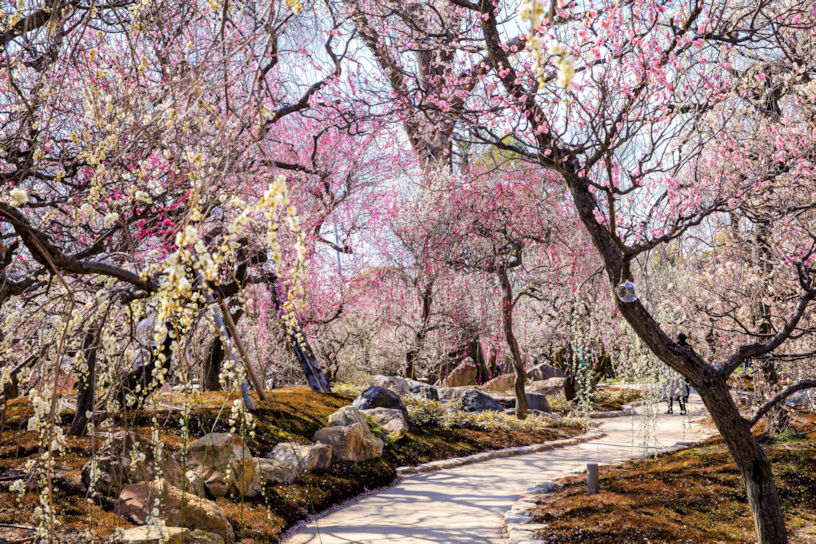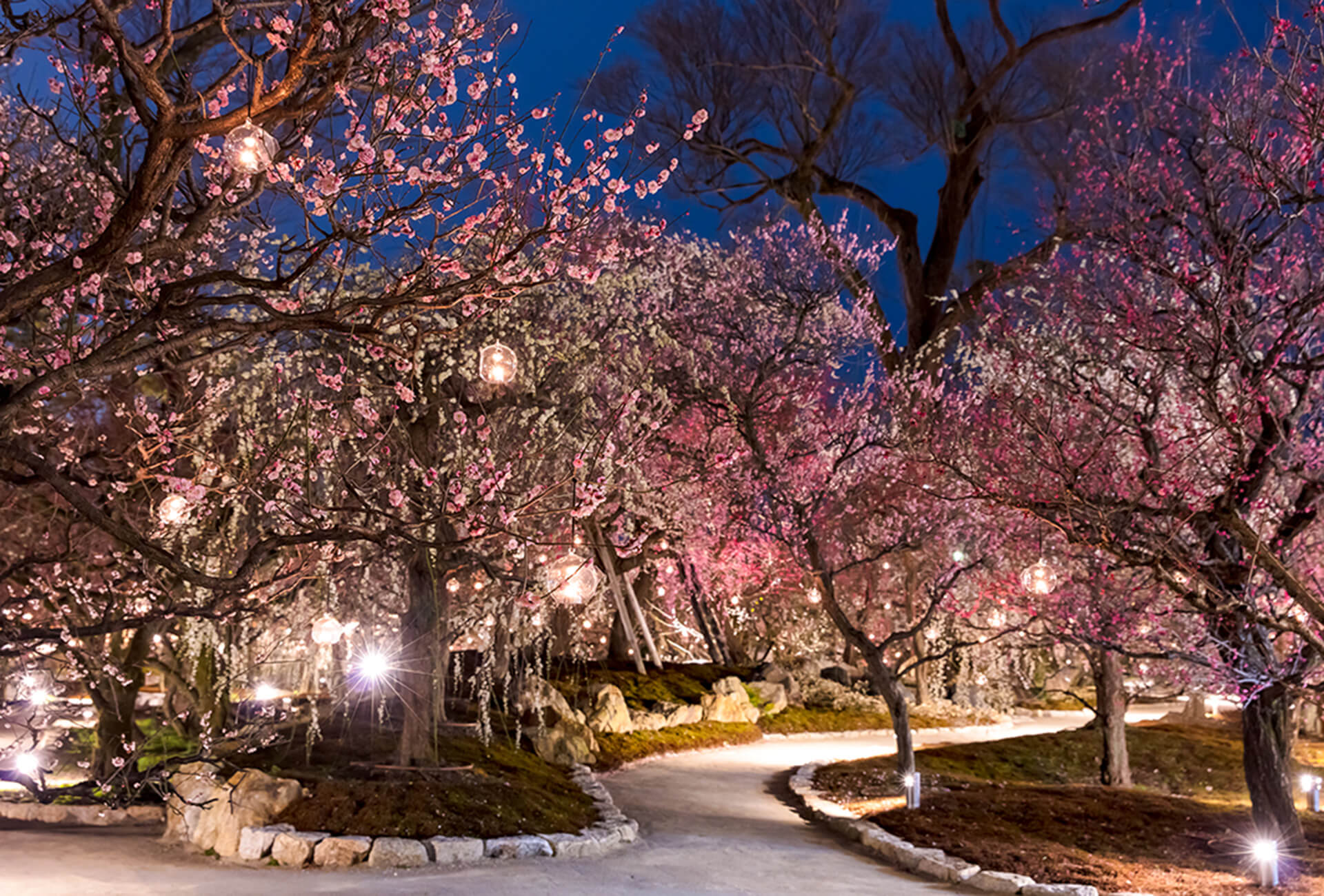


Kitano Tenmangu
The original shrine of the thunder god of scholarship, graced by plum blossoms.
Located in Kyoto, Kitano Tenmangu was the first shrine built to appease the spirit of the scholar Sugawara no Michizane, and it serves as the head of all Tenmangu shrines in Japan.
History of the Shrine
The story of Kitano Tenmangu is one of Japan's most famous tales of a vengeful spirit ('onryo') transformed into a benevolent god. Sugawara no Michizane (845-903) was a brilliant scholar and high-ranking court official. Falsely accused of treason by his political rivals, he was exiled to the remote island of Kyushu, where he died in grief. Following his death, the capital city of Kyoto was struck by a series of devastating plagues, floods, and violent lightning storms. The imperial palace itself was struck by lightning, killing several of Michizane's chief accusers.
These terrifying events were widely believed to be the work of Michizane's wrathful spirit seeking revenge. To appease this powerful ghost, the Imperial Court posthumously pardoned Michizane, promoted him to the highest court rank, and in 947 AD, built this shrine in his honor. He was deified as 'Tenjin-sama', the heavenly god of thunder and scholarship, successfully transforming a feared spirit into a revered protector.
The Enshrined Kami
Tenjin-sama is the deified Sugawara no Michizane. Originally enshrined to pacify his angry spirit, which manifested as a thunder and lightning, he is now revered as one of Japan's most beloved and benevolent kami. Because of his unparalleled genius as a scholar, poet, and calligrapher in life, he is worshipped as the supreme kami of learning, scholarship, and literature.
Millions of students and their parents pray to him for success in entrance examinations and academic pursuits. He also represents integrity and sincerity, and is prayed to for the clearing of false accusations, a direct reflection of the injustice he suffered. He is a powerful symbol of how even great tragedy can be transformed into a lasting, positive force.
What to See
The main shrine building, a designated National Treasure, is a magnificent example of the 'gongen-zukuri' style, connecting the main hall and worship hall under a single roof. The grounds are filled with numerous statues of oxen, the divine messengers of Tenjin. Students preparing for exams can be seen rubbing the heads of these statues, hoping to be blessed with wisdom. The shrine's treasure hall houses priceless artifacts including historical documents and picture scrolls depicting the shrine's founding legend.
The shrine is perhaps most famous for its stunning plum blossom garden. Michizane adored plum blossoms, and the grounds are home to over 1,500 plum trees of 50 different varieties. They bloom from February to March, creating a beautiful and fragrant spectacle. The shrine also hosts a lively flea market, the 'Tenjin-san Market', on the 25th of every month, a date associated with Michizane's birth and death.
Major Festivals
The 'Baikasai' (Plum Blossom Festival) on February 25th is the shrine's most important event, commemorating the anniversary of Michizane's death. The highlight of this festival is a large, open-air tea ceremony ('nodate') where geiko and maiko (apprentice geisha) from the nearby Kamishichiken district serve tea and sweets to thousands of guests amidst the blooming plum trees. The 'Zuiki Matsuri' in October is a unique harvest festival featuring a portable shrine decorated with vegetables and other dried goods.
Support Kitano Tenmangu
Your participation helps preserve this sacred site for future generations. Every digital offering contributes to real shrine preservation efforts across Japan.
By making an offering, you become part of a global community honoring Japanese spiritual traditions and supporting the cultural heritage that has been cherished for centuries.